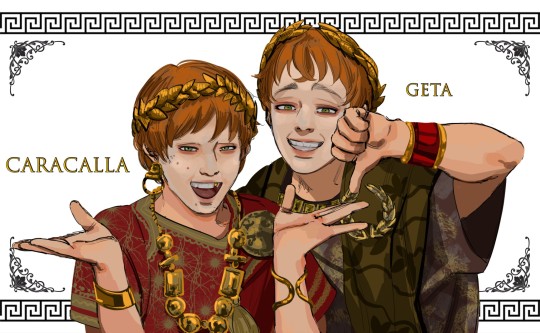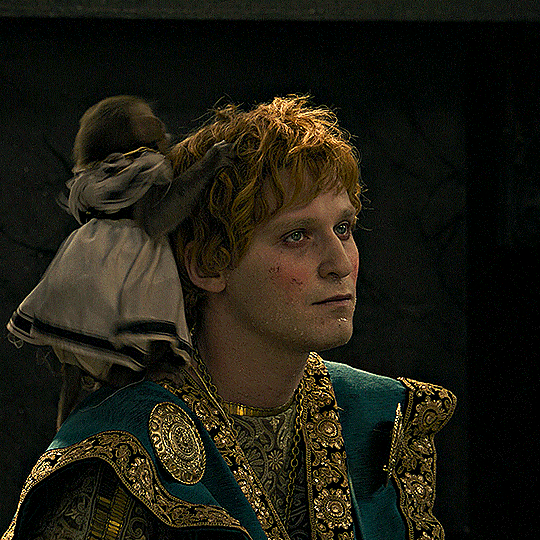helaena coded, 23, too slow on my updates, unhealthy addiction to ewan mitchell
Don't wanna be here? Send us removal request.
Text
The Sublet - Masterlist
Modern AU Series (Completed)
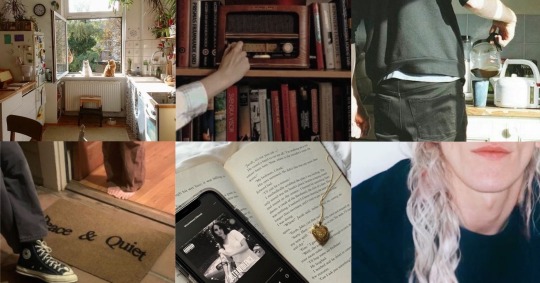

Warnings: She/her pronouns, slow burn, angst. Tags will be added as the fic goes along.
Pairings: Modern!Aemond x Reader
Summary: Living with Helaena Targaryen was one of the best decisions you had ever made. Meeting at university, the two of you became thick as thieves and quickly best friends, moving into a flat together. But what will happen when Helaena has to leave, and her quiet, brooding, brother moves in?

Chapter 1: Christmas Beetle
Chapter 2: Departure
Chapter 3: Cregan Stark
Chapter 4: Bunny
Chapter 5: Sīkudi Nopāzmi (Seven Hells)
Chapter 6: Lapse in Judgement
Chapter 7: Hard Truths
Chapter 8: Boiling Point
Chapter 9: Eye of the Storm
Chapter 10: Shifting and Changing
Chapter 11: Scars of the Past
Chapter 12: The Red Keep
Chapter 13: Proposition
Chapter 14: Over the Edge
Chapter 15: Stay

Taglist: Please ask if you would like to be added to the taglist
@mrstargayen09 @malfoytargaryen @hogwarts1207 @diannnnsss @iamavailablesstuff @seni039 @qyburnsghost @lilitheal @mariaelizabeth21-blog1 @loser-keiji @watercolorskyy @skikikikiikhhjuuh @toodlesxcuddles @kaelatargaryen @aemonds-fire @anitazut @melsunshine @persephonerinyes @hey-lucille @wintrr13 @arcielee @hueanhdang @coffedraven @happinessinthebeing @zairishmya @hanula18 @lovejustlovelythings-blog @harryssunflxwer @spinachtz @bellaisasleep @aemshaircare @heavenly1927 @yentroucnagol @snh96 @thedamewithabook @hanula18 @sweethoneyblossom1 @siriusblackrunmeover17 @yentroucnagol @urmomsgirlfriend1
Bold is who I cannot tag
1K notes
·
View notes
Text
Sámi Duodji
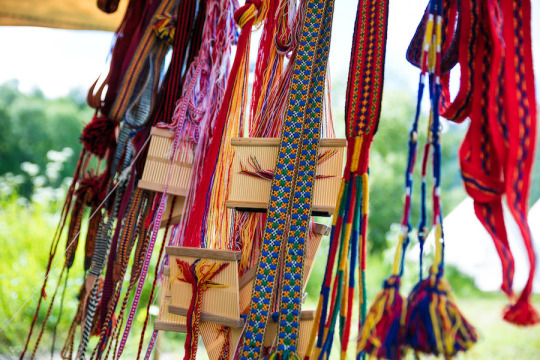





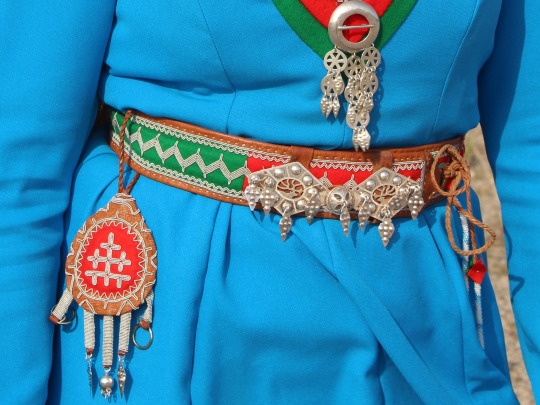


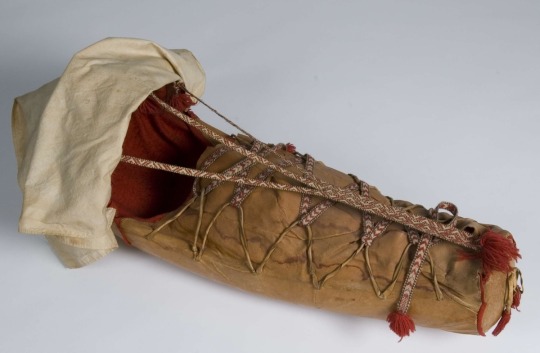
Sámi duodji/duodje/duedtie/vætnoe is the term for traditional Sámi handicraft and artscraft. Duodji has a long history, and a complex one too. It’s hard to define what duodji is. You can say that it’s just Sámi handicraft and artscraft. Yes, that is true, but it’s more than that. It’s the connection between the maker and the object, the connection between this form of art and the culture, languages and history.
Duodji is everything from knives, horns, skiis, and gákties, to belts, cups, shoebands, sleds and so much more.
(Picture sources: Nordlige Folk, Wikipedia - Duodji, perspektivet.no, SNL - Kautokeino kofta, samiske veivisere, kunstkultursenteret.no, norsk folkemuseum)
277 notes
·
View notes
Note
Could you talk a little bit about Sami tribes? I know of northern and southern sami, and I also know there are forest sami, but what are the specific names for them? Also what languages are typically spoken for each?
Thank you! I really appreciate your account and the education it gives!
Fair warning, this is probably going to get really long. But it's a fun question, so I'm glad you asked!
First of all, we don't really have tribes like Native Americans. According to Oxford Languages (the first result that came up when I googled) a tribe is:
“a social division in a traditional society consisting of families or communities linked by social, economic, religious, or blood ties, with a common culture and dialect, typically having a recognized leader.”
Rather than “tribes”, we say “area traditions” (”områdestraditioner” in swedish). I think the difference between Native American tribes and Sámi area traditions is that each area tradition did/do not have a recognized leader. I don’t think we were ever so intentionally organized. Our “tribes” are just Sámi people that lived in close proximity to one another and therefore developed similar traditional clothing styles and languages. (I suppose we do have “recognized leaders” now in modern times, in the form of elected Sámi politicians, but they represent all of swedish Sápmi and not each area tradition. But yeah, still not tribes.)
As the name suggests, area traditions are based on the geographical area that our ancestors lived in. You have heard about north Sámi and south Sámi, but there are also ume Sámi, lule Sámi, pite Sámi and east Sámi. I’ve included a map that shows the different areas. Source: samer.se/karta

(As you can see, the borders between areas are kind of “floaty” and not clear cut. We don’t have strict definitions of where one area begins and another ends.)
You have also heard of forest Sámi. There are also groups called tundra Sámi and sea Sámi. These titles describe where the Sámi lived and how their geographical surroundings affected their methods of livelihood. For example, sea Sámi lived near the coast and their livelihood was mostly based on fishing and hunting. When speaking of sea Sámi, we are typically refering to those that lived along the coasts of Norway.

The above picture shows the sea Sámi population in northern Norway in the year 1900. Source: wikipedia
Tundra Sámi lived a nomadic lifestyle, moving alongside their reindeer herds. Forest Sámi lived in the forests all year round. (Edit: I’ve heard of forest Sámi families who have also lived nomadic lifestyles as reindeer herders, so my definition here is not super strict.) I think these categories kind of overlap with the area traditions, in the sense that someone can be a north sea Sámi or a south forest Sámi.
As for the Sámi languages, there are at least nine: North, South, Lule, Pite, Ume, Inari, Skolt, Kildin, and Ter. Some of them are close to extinction (having only a handful of speakers) and there may have been Sámi languages that are completely lost today. North, South, Lule, Pite, and Ume are spoken in their corresponding geographical areas. Inari, Skolt, Kildin and Ter are spoken in the east Sámi area.
Alright, so what I’ve described so far are the overarching categories of Sámi. Within each area tradition (north, south, east, lule, pite, ume) there are a number of more specific sub-areas that each have their own specific traditional clothing. I’m north Sámi, but more specifically I belong to the Karesuando area tradition.
The NORTH SÁMI - KARESUANDO gákti generally looks like this:

Source: samer.se (and my post)

Source: folkcostume.blogspot.com

Source: elevutstallningen.cargo.site (and my post)
And then we have NORTH SÁMI - KAUTOKEINO:

Source: @johttiproductions (and my post)
NORTH SÁMI - JUKKASJÄRVI:

Source: samer.se (and my post)

Source: Magnus Winbjörk (and my post)
NORTH SÁMI - KARASJOK:

Source: @samekofter

Source: @polarknits
NORTH SÁMI - LYNGEN (these are the ones that are often referred to as sea Sámi!):

Source: @samekofter

Source: @samekofter
Now, let’s look at some south Sámi gapta. Starting with SOUTH SÁMI - VILHELMINA:
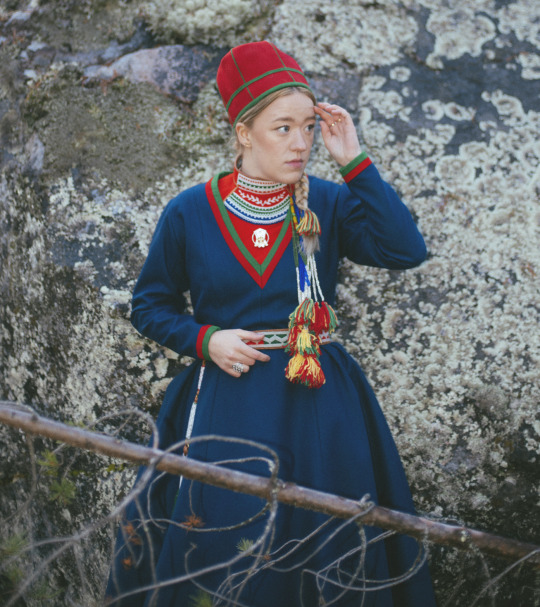
Source: elevutstallningen.cargo.site (and my post)

Source: @samekofter
SOUTH SÁMI - HÄRJEDALEN:

Source: samer.se (and my post)

Source: @arenhuvud

Source: @signerensbrg
SOUTH SÁMI - HÄRJEDALEN / RØROS:

Source: @samekofter

Source: elevutstallningen.cargo.site (and my post)
Moving onto LULE SÁMI - JOKKMOKK:

Source: @tilderistin

Source: elevutstallningen.cargo.site (and my post)

Source: @nadjabl (Guy on the left is wearing lule Sámi Jokkmokk gapta, girl on the right is wearing north Sámi Jukkasjärvi gákti.)
LULE SÁMI - GÄLLIVARE:

Source: samer.se (and my post)

Source: Astu Design

Source: Found on google/pinterest. Couldn’t find original source.
UME SÁMI - AMMARNÄS:

Source: @susanne.winka

Source: elevutstallningen.cargo.site (and my post)
UME SÁMI - ARVIDSJAUR:

Source: @samekofter
PITE SÁMI - ARJEPLOG:

Source: samer.se (and my post)

Source: @ragnefjell

Source: @samekofter
PITE SÁMI - FAUSKE:

Source: @fridaelinee
So now I’ve shown you some examples of traditional clothing from north, south, lule, ume and pite area traditions, but this is just barely scratching the surface! There are plenty more sub-area traditions within these and I haven’t even touched upon the traditional clothing of Inari Sámi, Skolt Sámi, etc.
One thing you should know is that these pictures are not absolute representations for their entire area tradition. The cool thing about Sámi clothing is that they are constantly evolving and following modern trends. (But we also try to retain the old, traditional versions so that they are not lost.) There are also variations based on your specific family (blood-related or through marriage). This means that there are ENDLESS variations of Sámi clothing and that no gákti is exactly like another one.
For example, you may have noticed that most of these clothes are a semi-dark blue. This is seen as the most typical and traditional base color for Sámi clothing. But we are pretty free to change this base! Red is also a popular color, and also fairly traditional, but you could go for a green, yellow, purple or even a hot pink base color, if you wanted!
I recommend following @samekofter on instagram, if you’re interested in seeing a bunch of different Sámi clothing from various area traditions.
I hope I have answered your questions, but let me know if there’s anything I missed or if I should clarify something! :)
72 notes
·
View notes
Note
bures! i dont know how much you know about dogs, but there are a few dog breeds developed by the sámi and they all seem to contain the L-slur in their english names, so i was wondering if you happened to know if there are any better names for them? i love your blog and i hope you have a good day :)
Bures!
“Renhund" (reindeer dog) can be used as an alternative to "l*pphund", although some people consider it a name specifically for dogs that are actively working with reindeer herding. It’s also more of a collective name for all Sámi-developed dog breeds and even Sámi people use the official names when referring to specific breeds. If there are better alternatives, I’m afraid I don’t know them.
Thank you and I hope you have a good day, too! ❤
15 notes
·
View notes
Note
(The prevous liidni anon here again, hi!) I didn't know South/Lule Sámi wore rose scarves too! The white scarf in that second photo looks really similar to the scarf worn with Munsala dress (google Munsala kansallispuku to have a look!) Btw, the Finnish floral scarves are made of wool. Is this true for the South/Lule Sámi scarves too or are there rose scarves made of silk? Also, I've never seen anyone wearing a scarf under a hat before. Looks nice and reminds me a bit of Skolt Sámis! :D (1/3)
The rose patterns also remind me of Slavic rose scarves (you can google that too, if you haven't seen them before). It does look like there's a continuum of scarf/shawl fashion in North/North East Europe, and I think it's cool how it shows up in Sámi traditions! :) (2/3)
And since you mentioned the jewellery, some Finnish dresses have brooches a bit like how Northern Sámi gáktis have riskus, but they're smaller, there's usually one, and they're used to fasten the shirt and not the shawl. (My personal favourite is "helysolki", but I still think riskus look more impressive!) Do you know if riskus are worn by all Sámi? Do they look different in different area traditions? Does it matter how many you wear or can you choose freely? (3/3)
Those Munsala scarves look pretty much identical to the scarves Sámi people wear! I don’t actually know what material those flowery scarves are made of, but I think it varies? I kind of assumed it would be a lighter fabric, like cotton or something, but in the second photo I posted in my reply to your last ask the white scarf seems a bit translucent? I don’t think they are made of silk though, because silk scarves have a certain shine and smoothness to them that I don’t see in those flowery scarves. And as for Sámi wool scarves, they look like this:

Source: @samekofter
And yeah, the hat and scarf combo seems common for Skolt Sámi as well, although they usually wrap the scarf on top of the hat.

Source: Anna Lumikivi @lumikiva
As for riskus, I think they were more commonly worn by north and Inari Sámi in the past, but these days it’s not unusual to see Sámi people of other area traditions wearing them, too. They are also usually worn by women, but in recent years it seems like some men have also started wearing them.
For north and Inari Sámi, riskus serve a purpose of pinning down the silk scarves and securing them to the gákti. Other area traditions don’t use silk scarves and they decorate their gákti with embroidery and such, so there’s not really a need for riskus. When I see south and lule Sámi people wearing riskus, it’s usually just one and it’s on the smaller side. Purely decorational.

Source: Liv Aira @livaira

Source: Design by Tjäder @designbytjader
There aren’t really any rules regarding who can wear riskus and how many. They used to be (and sort of still are) a symbol for wealth. The more and the bigger riskus you have, the richer you are. From what I’ve seen, it’s most common for north Sámi to wear two or three riskus, like in the earlier picture with the wool scarf. If you wear more than that, it might feel a bit like showing off? But if it’s for a fancier occasion (such as for the bride at her wedding, or perhaps a student who’s graduating), it’s more “acceptable”.
Riskus don’t really look different depending on area traditions. I think it’s more a matter of which craftsman you buy silver from. Every silver-maker has their own style and brand. I have heard some people refer to a certain style of risku as being typical for the Kautokeino area though. They have a lot more “dangly bits”, so they look a bit more intricate than other riskus.

Source: Randi Marainen @marainens_silver
But yeah, it’s really interesting to see how fashion trends have spread across different areas and cultures!
42 notes
·
View notes
Text
Sámi Duodji










Sámi duodji/duodje/duedtie/vætnoe is the term for traditional Sámi handicraft and artscraft. Duodji has a long history, and a complex one too. It’s hard to define what duodji is. You can say that it’s just Sámi handicraft and artscraft. Yes, that is true, but it’s more than that. It’s the connection between the maker and the object, the connection between this form of art and the culture, languages and history.
Duodji is everything from knives, horns, skiis, and gákties, to belts, cups, shoebands, sleds and so much more.
(Picture sources: Nordlige Folk, Wikipedia - Duodji, perspektivet.no, SNL - Kautokeino kofta, samiske veivisere, kunstkultursenteret.no, norsk folkemuseum)
277 notes
·
View notes
Text


Thanks 2024 for giving us these men
211 notes
·
View notes
Text
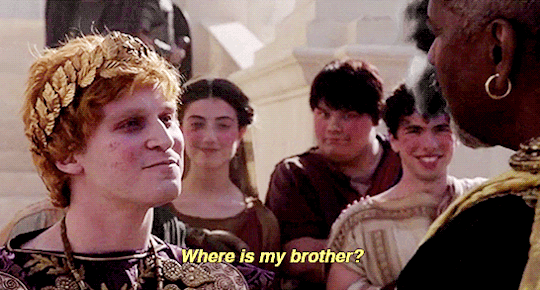

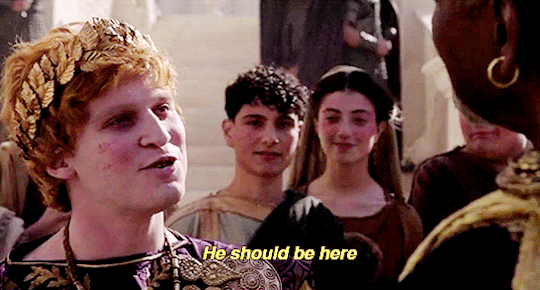

Caracalla asking about Geta. Gladiator 2 | deleted scene
660 notes
·
View notes
Text






Emperors watching the games in the Colosseum.
Gladiator II (2024) dir. Ridley Scott | » requested gifset by @where-the-stars-collide
2K notes
·
View notes
Text

I like him, i like the autistic man 💝💖💞🩷❤️🧡💛💚💖💝💘💘💋💌💟💌
997 notes
·
View notes
Text

Carrie projecting her period cramps onto Freddy
22K notes
·
View notes



